Inbound vs Outbound Sales: What’s Right For You?
Casey O'Connor
There’s no business that hasn’t wondered about whether to use inbound or outbound sales strategies to achieve their sales goals.
The two methodologies certainly each have strong pros; both also have a few notable cons.
In this article, we’ll go over everything you need to know about inbound vs. outbound sales.
Here’s what we’ll cover:
- What’s the Main Difference Between Inbound and Outbound Sales?
- Inbound Sales Strategy
- Outbound Sales Strategy
- Should You Choose Inbound or Outbound Sales For Your Organization?
What’s The Main Difference Between Inbound and Outbound Sales?
The main difference between inbound and outbound sales is who initiates the initial outreach.
With inbound sales, the prospect initiates the first contact. They choose to engage with your brand through strategic sales and marketing initiatives designed to attract, engage, and nurture prospects.
Outbound sales rely on sales reps to make the first contact. This is considered the more “traditional” sales strategy but has stood the test of time and remains a highly effective strategy for generating revenue for many organizations.
Inbound Sales
With inbound sales, the sales organization does not reach out to leads. Instead, the leads come to the organization by way of discovering carefully-created content or marketing initiatives meant to attract good-fit prospects.
“Sales” is a bit of a misnomer when it comes to inbound strategies. Inbound sales skip the traditional “pitch” and cold calling, and instead attracts and engages buyers with strategies like:
- SEO
- Email & content marketing
- Social media positioning
- Affiliate marketing opportunities
In other words, inbound sales strategies encourage B2B leads to come to the business, instead of the other way around.
The focus in inbound sales is on the customer’s pain points and how to solve them, not the features and benefits of the product itself.
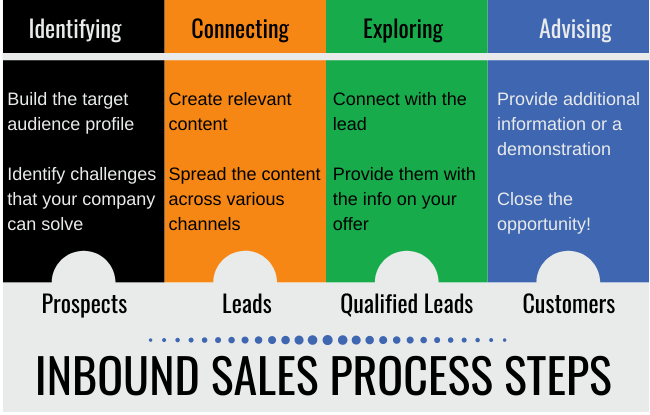
It’s important to note here that inbound sales strategies need to be carefully crafted and well-executed.
There is a lot of behind-the-scenes planning that goes into designing an inbound sales strategy; the content needs to be cohesive, valuable, and engaging in order to be impactful.
There are a number of pros and cons when it comes to using inbound sales strategies.
Pros:
- Easy to reach a huge potential market thanks to the power of the internet
- Allows you to position your company as an expert in the industry through high-quality content
- Builds trusting relationships with prospects and customers
- Creates a great strategy for nurturing leads that need more decision making time
- Generates increased web traffic
Cons:
- Requires a lot of time and intense collaboration upfront
- Strategies and content need to be well defined and well-executed
- Metrics can be difficult to track, as each prospect has their own highly unique buyer’s journey and timeline
The following steps will help you design your own inbound sales strategy.
1. Align Sales and Marketing
The most important determining factor in whether an inbound sales strategy is successful is how well the sales and marketing teams are aligned.
Truth be told, it’s wise to take steps toward this collaboration, even if you don’t use inbound sales strategies. Sales organizations benefit across the board from aligning with the marketing team.
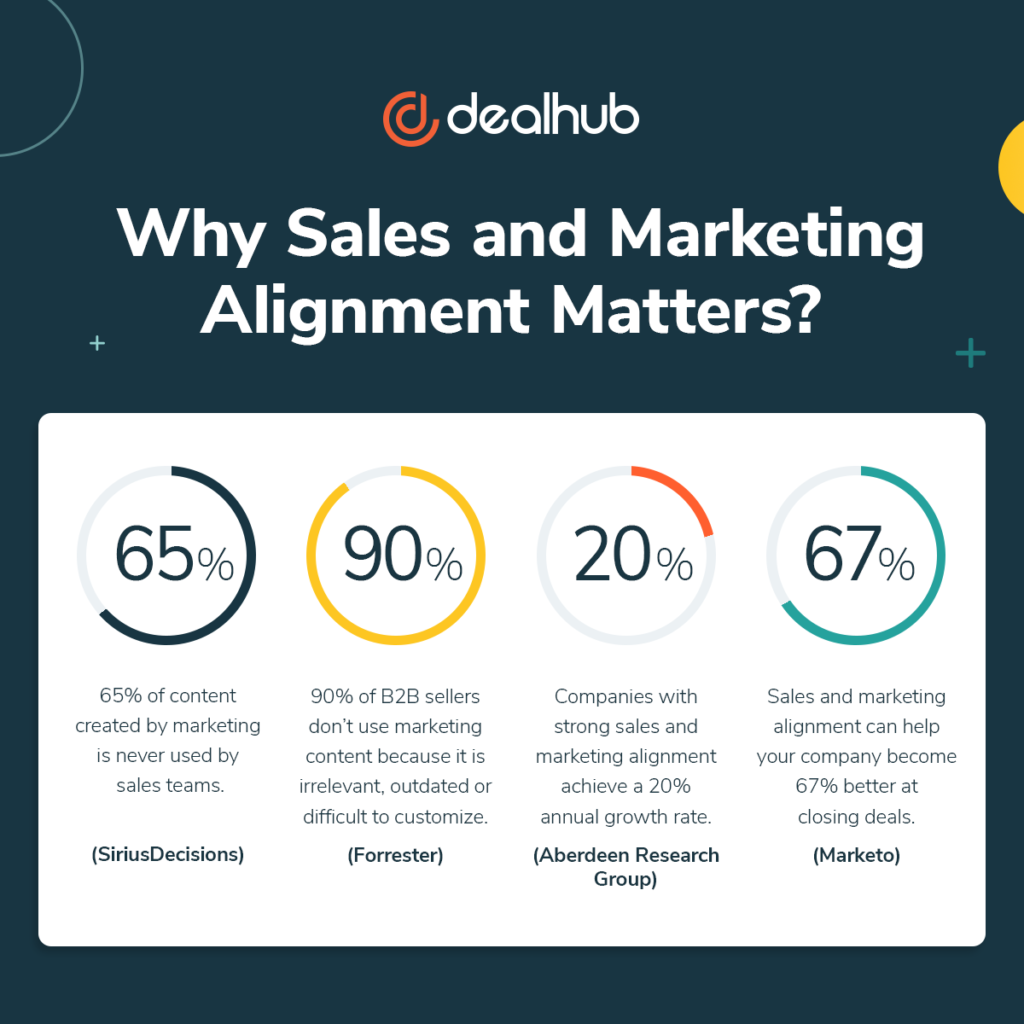
In inbound sales, both departments need to collaborate in order to make a content marketing strategy viable.
All of the various pieces of content need to play a role in the overall strategy. And sales and marketing teams should provide each other constant feedback on how well the teams’ strategies are meeting the needs of the prospect.
2. Refine Your Social Media Presence
Inbound sales start with prospects finding you themselves — usually online.
Chances are high that somewhere in your inbound sales strategy, prospects will end up on at least one of your social media pages.
Spend some time (with your marketing team, of course) combing through your company’s profiles on each of the platforms for which you have an account. Make sure your branding is streamlined and consistent, and all links and content are working and available.
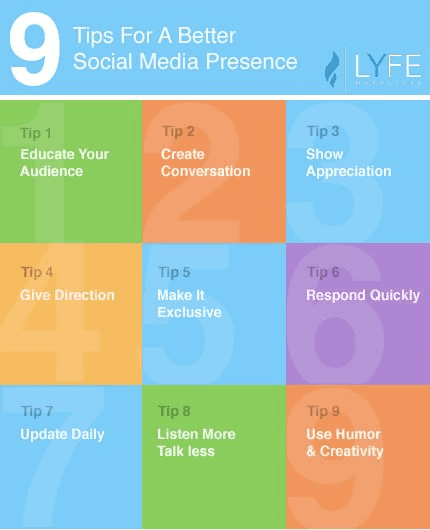
3. Develop Content
Your content library will become the backbone of your inbound sales strategy.
Before strategizing and creating content, though, sales and marketing should work together to build out the details of their ideal customer profile and buyer persona.
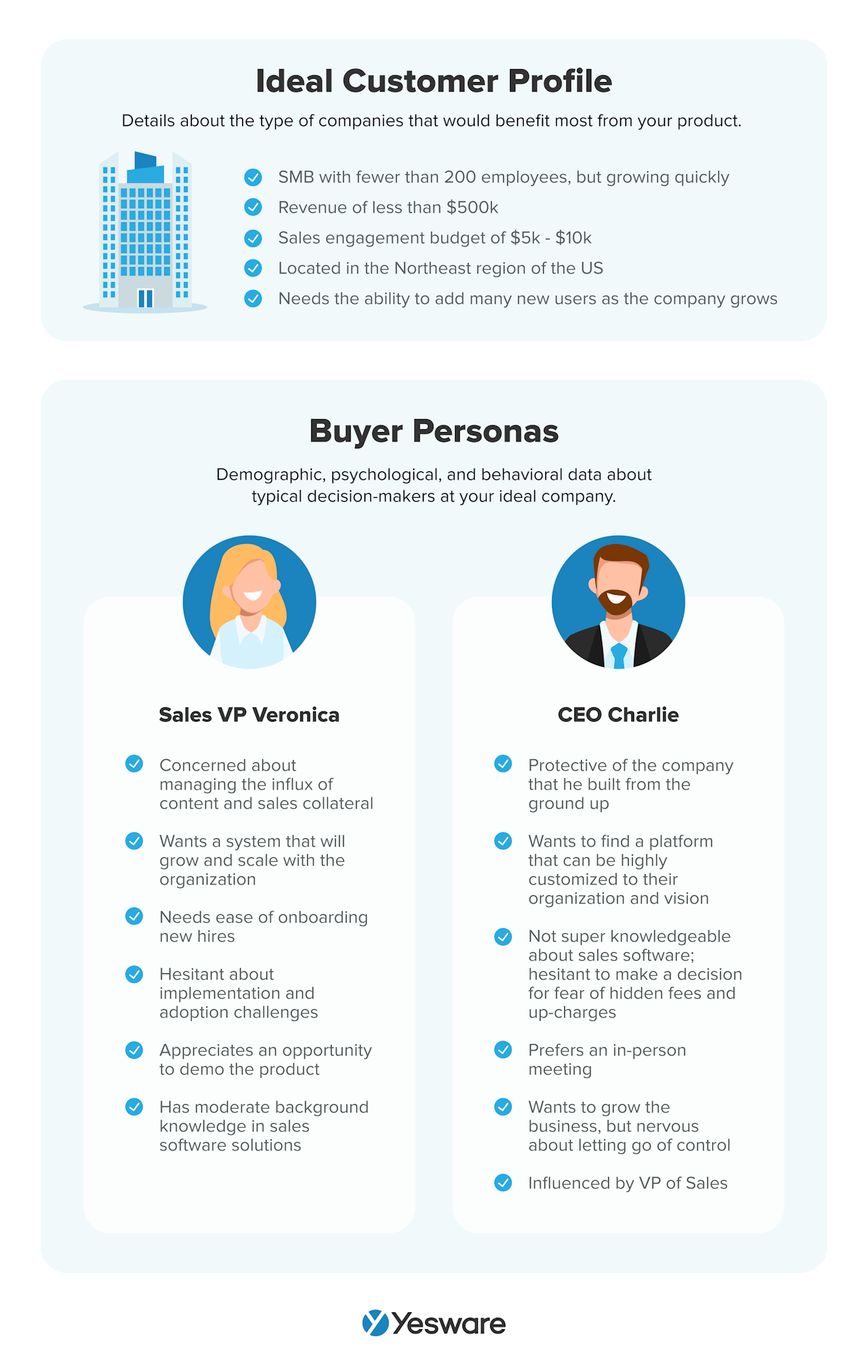 These profiles will help your sales and marketing teams develop highly targeted content that speaks to the specific needs, interests, and pain points of your target market.
These profiles will help your sales and marketing teams develop highly targeted content that speaks to the specific needs, interests, and pain points of your target market.
4. Generate Reviews and Word of Mouth
At the end of the day, the best way to run a successful inbound sales strategy will always be with the help of enthusiastic word of mouth.
There’s no easier way to get prospects to come to you than by having a happy customer encourage them to do so.
To take full advantage of referral leads, make sure your SEO is optimized, your landing pages are cleaned up and on-brand, and your content is easily accessible.
Outbound Sales
On the other end of the spectrum is outbound sales. In this sales methodology, sales reps and SDRs reach out to leads to qualify them and, depending on how good of a fit they are, potentially initiate them into the sales process.
Although there is some advertising and brand awareness involved — many companies that rely on outbound sales strategies opt for tools like billboards, mass media, and trade show participation — the backbone of outbound sales is cold call or cold email outreach.
Cold outreach gets a bad rep for being awkward and futile, but it can actually be an extremely lucrative strategy when used correctly. There’s something to be said for the human-to-human interaction that allows the sales rep to really personalize the sales process for each well-qualified lead.
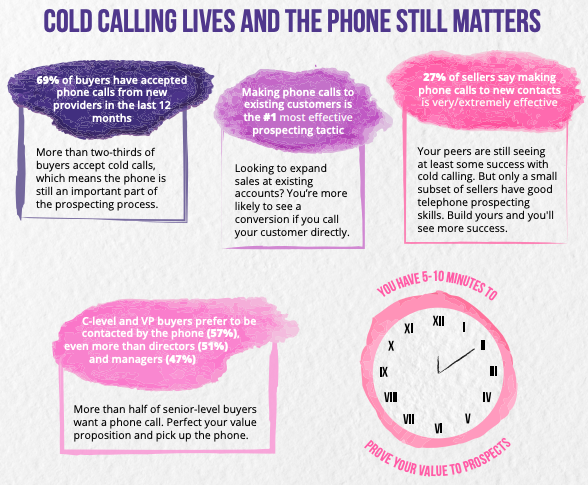
There are a number of pros and cons when it comes to using inbound sales strategies.
Pros:
- Generates a very quick ROI, making it a great option for startups with limited resources
- Easy to automate, track, and measure
- Gives sales professionals the chance to directly contact the prospects they feel a connection with
- Easy to systemize and scale
- Provides an efficient way to qualify leads
Cons:
- Some prospects may not appreciate unsolicited outreach, which can start the relationship off on the wrong foot
- It may be hard to afford advertising upfront
- Requires a significant level of persistence and motivation — rejection comes with the territory in outbound sales
The following steps will help you design your own outbound sales strategy.
1. Prospect
Just like with inbound sales, sales and marketing should work together to create a common understanding of the ICP and buyer personas. Those profiles can then be used to generate a list of prospects to research and target for cold outreach.
2. Outreach
Once sales reps know who they’ll be approaching, it’s time to start reaching out.
The biggest hurdle for many sales reps in this step is their mindset. Rejection comes with the territory in outbound sales, so try not to take it personally — focus on making as many calls or sending as many emails as you can. Much of outbound sales is a numbers game.
Over time, your sales team can consider creating a bank of proven call scripts and email templates for cold outreach so that each new call doesn’t feel quite as daunting.
Tip: Grab some cold email templates from us below – backed by data.
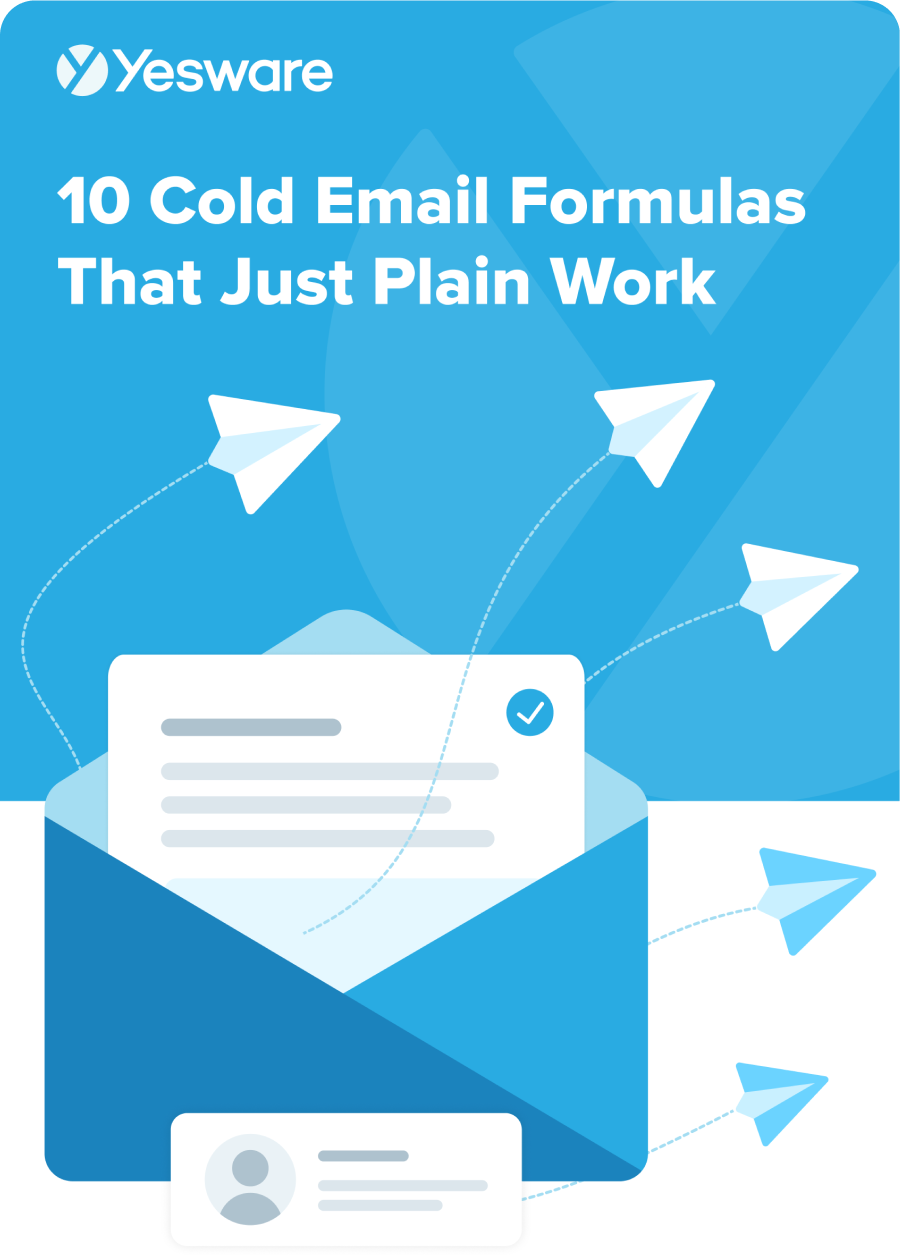 10 Cold Email Formulas That Just Plain WorkSee how B2B sales professionals are using these cold email templates to engage more prospects, fill the top of their funnel and build more sales pipeline faster.
10 Cold Email Formulas That Just Plain WorkSee how B2B sales professionals are using these cold email templates to engage more prospects, fill the top of their funnel and build more sales pipeline faster.
3. Qualify
Once contact is made, the “hard” part is done. The sales rep then works the interaction to further qualify the lead and see if they’re ready to begin a sales conversation.
4. Pitch
For well-qualified leads, outbound sales leaves plenty of room for salespeople to do what they do best: sell products.
In your sales pitch, reps talk about how well the product can meet the prospect’s needs. The specific strategies in this step will depend on the unique selling points of your product and the triggering pain points of your prospect.
5. Handle Objections
Again, expect rejection in outbound sales — it’s not at all uncommon for prospects to raise a number of sales objections to your pitch. Don’t take this as a sign that you’ve done a poor job; when a prospect raises an objection, it means they’re looking for a reason to say yes.
Instead, use objections as an opportunity to reframe your product’s value.
For example, if a prospect complains that they can’t afford your product at the moment, you could respond to that objection with the following:
Companies with sales teams of your size saved about $30,000 and 350 man-hours of work last year by using our product. Can you afford to give up that ROI?
Close the Deal
It’s important to take steps to officially close the deal once you have verbal commitment from the prospect. Even the strongest verbal commitment can’t hold a candle to a signed written agreement.
One of the best things about outbound sales is that it’s very structured and easy to delineate roles. Once the process is up and running, track the sales metrics and KPIs from each stage to optimize it.
Should You Choose Inbound or Outbound Sales For Your Organization?
With the two methodologies being so different, it can be challenging for companies to determine which will work best for their specific organization.
The truth is, there is usually no clear-cut answer to that question. There are few organizations, if any, for which one or the other is a perfect fit. For as long as both are viable options, companies will wonder how to approach the inbound vs. outbound sales debate.
That’s why many companies end up adopting a hybrid of both inbound and outbound sales strategies to meet their sales goals.
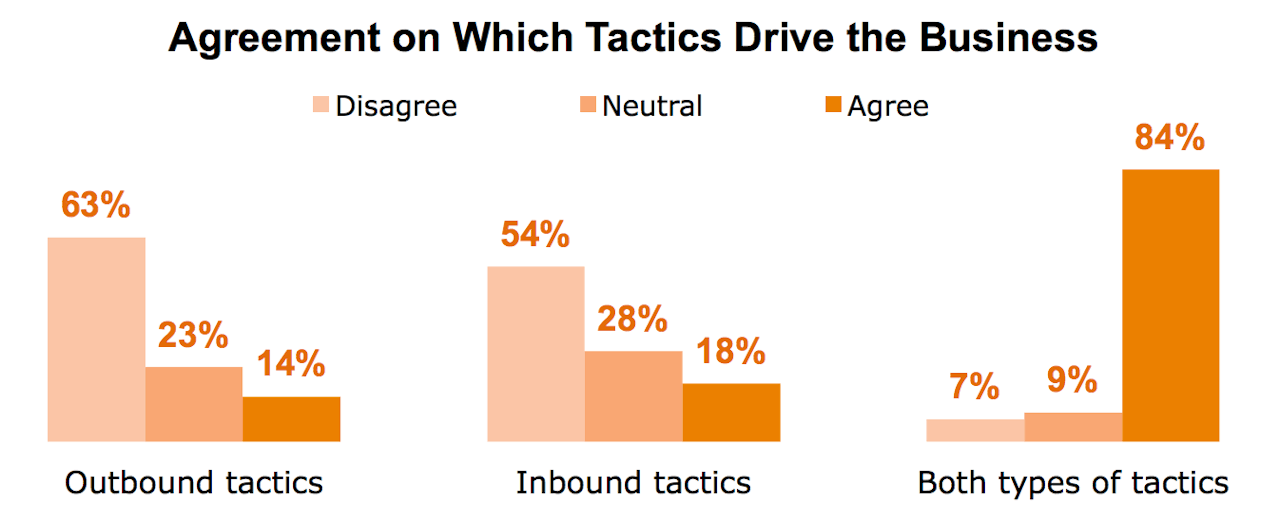
Hybrid Outreach Strategy
When designing a hybrid outreach strategy, consider the following:
- Buyer Persona: What would your buyer prefer? Would they appreciate (personalized) cold outreach, or would they be turned off by it? Do they like to do a lot of research on their own before speaking to a sales team? The preferences of your decision-makers will help you determine the most effective way to put the pieces together.
- Length of Sales Cycle: If your buyer needs more decision-making time, you need to take that into account when designing your strategy. You may need to fill the middle of your funnel with inbound strategies to nurture them through the process
- Access to Resources: For some companies, it simply may not be the right time to invest in a new or more costly outreach strategy. Consider the various resources you have at your disposal — can you afford to sink time into creating a content catalog? Do you have the expertise on hand?
With those considerations in mind, it’s worth mentioning that there are specific scenarios in which there is a clearer answer to the question of inbound vs. outbound sales.
Inbound sales are a better fit for:
- Companies with a shorter sales cycle
- Businesses that sell things that many people are searching for (this makes it easier for your content to be discovered)
- Organizations that don’t have access to a lot of capital to use to grow and scale an outreach operation
Outbound sales are generally a better fit for:
- Companies that sell expensive products, or who sell to enterprise clients
- Products with longer sales cycles
- Buyer personas that are very well-developed
- Products that are a completely novel solution to the problem at hand
Has your team had the inbound vs. outbound sales debate? How do you use the two strategies to meet your sales goals?
Get sales tips and strategies delivered straight to your inbox.
Yesware will help you generate more sales right from your inbox. Try our Outlook add-on or Gmail Chrome extension for free, forever!
Related Articles
Casey O'Connor
Anya Vitko
Anya Vitko
Sales, deal management, and communication tips for your inbox

